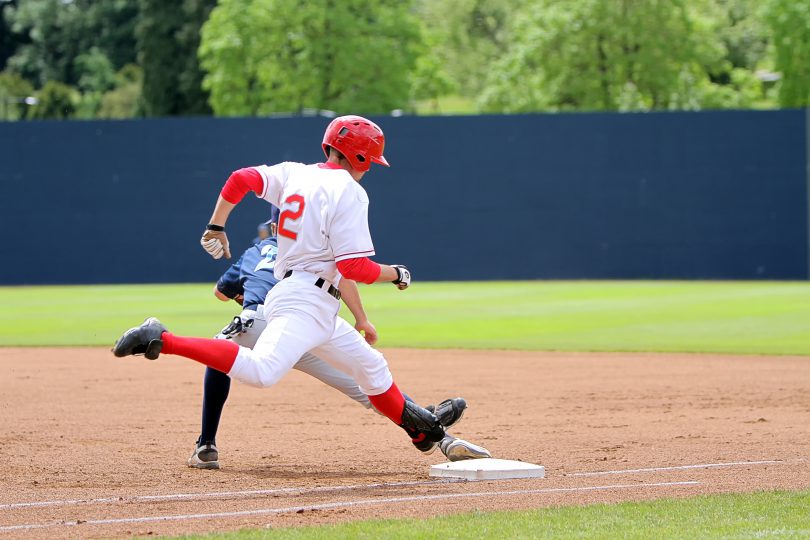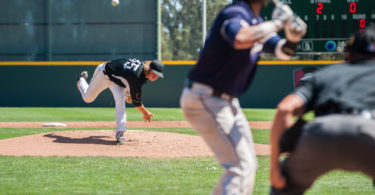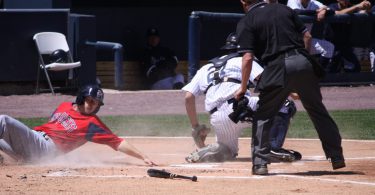The Situation:
It’s a 5-5 game in the bottom of the 9th inning with a runner on 3rd and two outs. The hard throwing closer is in the game facing the speedy lead-off man and has fallen behind in the count 2-0.
The Play:
The pitcher comes set and delivers a change-up that starts thigh high before starting to take a dive out of the zone. The hitter, who is expecting a fastball, starts his swing. Mid swing, the hitter realizes the pitch is not what he is looking for and attempts to hold up. His check swing inadvertently makes contact with the pitch, resulting in a swinging bunt down the third base line. The hitter takes off down the line as the ball trickles towards the charging third baseman. The third baseman realizes the bare-hand is his only play. He picks the ball up and slings it towards first. It is a bang-bang play at the bag, with the runner’s foot hitting just before the ball enters the first baseman’s outstretched mitt. Just after the batter hits first base, he slows up, looks to his left and gives an emphatic safe call.
The Outcome:
Instead of confirming what the batter believed, the umpire returns an emphatic OUT call. With no replay to turn to at the college level, the game is headed to extra innings, despite both the player and coach protesting that the umpire got the call wrong.
What Went Wrong:
On this play, there are several things that went wrong. We will save the talk about the leverage-count check-swing for our next Think the Game and focus here on the hitter’s base running. As we have seen with replay, there are many bang-bang plays in almost every baseball game and the umpires are not always perfect. On close plays at first, umpires are taught to watch the foot hit the base and listen for the ball hitting the glove. Knowing that umpires are faced with a tough responsibility in these situations, the runner needs to do everything in his power to make it look like he is safe, even if he might not be.
In this situation, the runner slows up as soon as he hits first base, which is a mistake. Had he kept running hard through the bag, there may have been more separation between his foot hitting/leaving the base and the ball hitting the mitt, making it an easier call for the umpire. Making the call easy for the umpire should be your goal as a runner.
When runners slow up after contact with the base, it gives the perception that they got to the base slower, because their body and feet are still over the bag instead of further up the line as they would be if they kept running hard. Even though this should not have any bearing on the call, perception matters a great deal. Especially on a play with big implications (such as a game winning call like this), umpires will err on the side of not making a mistake to end the game and instead, let the players decide the game decisively for themselves. Every time you run down the line, hit the front of the bag, with a forward lean in your upper body like a runner breaking the tape on a race, and run hard several steps through the base. If you do this every time, you will give yourself the best chance to be safe and leave as little doubt possible in the umpire’s mind that you are safe.
We follow up on this same situation from a different angle in tomorrow’s think the game, so be sure to check back!






